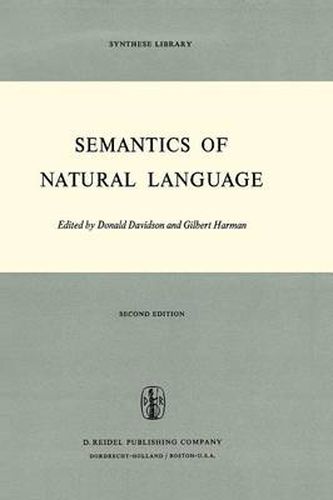Readings Newsletter
Become a Readings Member to make your shopping experience even easier.
Sign in or sign up for free!
You’re not far away from qualifying for FREE standard shipping within Australia
You’ve qualified for FREE standard shipping within Australia
The cart is loading…






This title is printed to order. This book may have been self-published. If so, we cannot guarantee the quality of the content. In the main most books will have gone through the editing process however some may not. We therefore suggest that you be aware of this before ordering this book. If in doubt check either the author or publisher’s details as we are unable to accept any returns unless they are faulty. Please contact us if you have any questions.
The idea that prompted the conferenee for which many of these papers were written, and that inspired this book, is stated in the Editorial Introduction reprinted below from Volume 21 of Synthese. The present volume contains the artieles in Synthese 21, Numbers 3-4 and Synthese 22, Numbers 1-2. In addition, it ineludes new papers by Saul Kripke, James McCawley, John R. Ross, and Paul Ziff, and reprints ‘Grammar and Philosophy’ by P. F. Strawson. Strawson’s artiele first appeared in the Proceedings of the Aristotelian Society, Volume 70, and is reprinted with the kind permission of the author and the Aristotelian Society. We also repeat our thanks to the Olivetti Companyand Edizione di Comunita of Milan for permission to inelude the paper by Dana Scott; it also appeared in Synthese 21. DONALO DAVIDSON GILBERT HARMAN EDITORIAL INTRODUCTION The success of linguistics in treating naturallanguages as formal syntactic systems has aroused the interest of a number of linguists in a paralleI or related development of semantics. For the most part quite independ- ently, many philosophers and logicians have reeently been applying formai semantic methods to structures increasingly like naturallanguages. While differenees in training, method and vocabulary tend to veil the fact, philosophers and linguists are converging, it seerns, on a common set of interrelated probiems. Sinee philosophers and linguists are working on the same, or very similar, probiems, it would obviously be instructive to compare notes.
$9.00 standard shipping within Australia
FREE standard shipping within Australia for orders over $100.00
Express & International shipping calculated at checkout
This title is printed to order. This book may have been self-published. If so, we cannot guarantee the quality of the content. In the main most books will have gone through the editing process however some may not. We therefore suggest that you be aware of this before ordering this book. If in doubt check either the author or publisher’s details as we are unable to accept any returns unless they are faulty. Please contact us if you have any questions.
The idea that prompted the conferenee for which many of these papers were written, and that inspired this book, is stated in the Editorial Introduction reprinted below from Volume 21 of Synthese. The present volume contains the artieles in Synthese 21, Numbers 3-4 and Synthese 22, Numbers 1-2. In addition, it ineludes new papers by Saul Kripke, James McCawley, John R. Ross, and Paul Ziff, and reprints ‘Grammar and Philosophy’ by P. F. Strawson. Strawson’s artiele first appeared in the Proceedings of the Aristotelian Society, Volume 70, and is reprinted with the kind permission of the author and the Aristotelian Society. We also repeat our thanks to the Olivetti Companyand Edizione di Comunita of Milan for permission to inelude the paper by Dana Scott; it also appeared in Synthese 21. DONALO DAVIDSON GILBERT HARMAN EDITORIAL INTRODUCTION The success of linguistics in treating naturallanguages as formal syntactic systems has aroused the interest of a number of linguists in a paralleI or related development of semantics. For the most part quite independ- ently, many philosophers and logicians have reeently been applying formai semantic methods to structures increasingly like naturallanguages. While differenees in training, method and vocabulary tend to veil the fact, philosophers and linguists are converging, it seerns, on a common set of interrelated probiems. Sinee philosophers and linguists are working on the same, or very similar, probiems, it would obviously be instructive to compare notes.